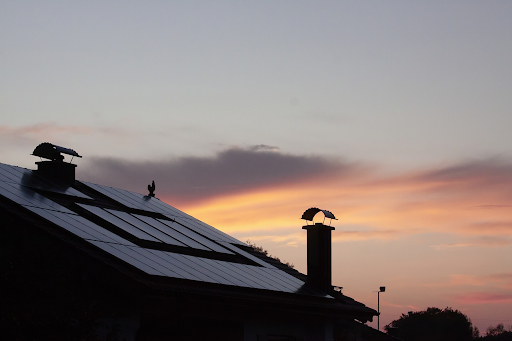Table of Contents
ToggleGlobal solar energy usage is rapidly increasing at a massive rate. In addition, In the last few years, a solid push from governments in various countries has resulted in numerous businesses and individuals shifting to the renewable energy sector.
Buildings and businesses are looking for solar energy to offset the cost of commercial electric power.
This article mentions the pros and cons of using an off-grid solar power system.
What is an off-grid solar system?
An off-grid solar system is an installation which is not connected to the external power grid. This means that the electric power generated by the solar cells will be used on-site alone.


Off-grid systems require batteries to store the energy that is generated by solar cells. Since there is no support from the main electric power grid, you need a system designed to accommodate various power needs, especially in seasons with few hours of sunlight, such as winters.
Off-grid systems were out of reach for most people mainly due to the high cost involved in installing batteries and inverters for storing the generated power.
Main parts of an off-grid solar system
Before installing an off-grid solar system, it is important to understand the working of each component. An off-grid solar system mainly consists of 5 integral parts.
- PV modules
- Controller
- Off-grid inverter
- Solar converter and solar inverter
- Batteries
Let’s examine each in detail.
PV Modules
In any photovoltaic system, the main power source are the photovoltaic cells(silicon-based). Once sunlight falls on them, DC (Direct current) power is generated, which is stored in the batteries.


As many of the home electric equipment are designed to work on AC power, the generated DC will be converted into AC (Alternate current) using an inverter. Several PV modules are available such as monocrystalline, polycrystalline etc., which can provide an output varying from 275 to 370 Wp.
Controller
The controller delivers the electric current from the solar cells to the battery bank. The controller disconnects the charging current when the battery gets charged to the maximum level.
These days controllers are equipped with advanced circuit design to deliver ultra-high power conversion.
Off-grid Inverter
These are specifically designed for high-efficiency off-grid power systems. It pulls power from the battery bank and converts DC to AC.


Solar converter and inverter
Solar panels generate DC electricity which must then be converted to AC for our homes and businesses. This is the primary role of a solar inverter.
Batteries
These are essential components of an off-grid solar system. The solar batteries should be equipped to hold power for two days or even more as there will be times when the sunlight is unavailable, especially during winters.
Types of off-grid solar systems
The two different types of off-grid solar systems are:
- DC coupled &
- AC coupled
DC coupled includes micro-hydro systems and MPPT solar charge controllers. On the other hand, AC-coupled generation sources include backup generators, wind turbines or solar inverters.
One important factor determining whether a system is AC or DC coupled is based on the size of the system. Usually, smaller systems are DC-coupled with built-in MPPT charge controllers.
On the other hand, larger off-grid systems can be either DC or AC depending on the compatibility with various charge controllers and inverters
Modern-day inverters are both AC and DC-coupled, making them flexible and secure. In addition, it has multiple charge options. The interesting feature is the black-start operation which kick starts if the batteries are depleted, the backup generator fails, or the main inverter shuts down.
Off-grid solar system battery options
Let us look at some battery options for off-grid solar power systems.
Lead acid batteries
Before the emergence of lithium-ion batteries, lead acid batteries were the most popular choice for off-grid systems. This is because lead acid batteries have been time-tested and can last up to 15 years if kept under optimum conditions.
However, the longevity of this type of battery can be affected if it is discharged heavily or kept at a high temperature.
These days off-grid inverters are equipped with sensors and programmable voltage settings to charge under all possible conditions.
Lead acid batteries are available in various options such as 2V, 6V or 12V. They are available in three major types
- Flooded
- AGM
- Gel
Compared to lithium-ion batteries, one of the major significance of lead-acid batteries is that the battery will not shut down at a low state of charge. It can be discharged down to a 0% state of charge. This function is extremely helpful in situations when the backup generator fails.
Advantages
- It can easily be recycled
- Highly reliable
- Very low risk
- Long-lasting and safe
- Compatible with most inverters
- The battery does not disconnect even at very low voltages
Disadvantages
- Battery life will get reduced if operated at a high temperature
- Low energy density
- A modular option is not available
- Hard to retain partial charge for long hours
- Efficiency is slightly low compared to other models 75% to 80%
Lithium-ion batteries
One interesting feature of lithium-ion batteries is their high efficiency of 92% to 98%.In addition, it offers additional benefits of scalability, lightweight and compatibility.
Lithium-ion batteries, unlike lead acid batteries, don’t have a fixed size limitation. Instead, they can be made in various sizes and shapes. The flexible size allows the user to add additional capacity later.
Lithium-ion batteries can charge 70% faster than lead-acid batteries.
One of the major advantages of a lithium battery is that it can sustain a low charge for a prolonged period without any side effects, such as sulfation.
Advantages
- Has a long warranty of over ten years
- Low risk and safe
- High discharge and charging allowed
- No degradation problem with less charge
- Scalable and modular
- Has a very high energy density
- Have a peak efficiency of 92%-98%
Disadvantages
- Difficulty in recycling the components
- Won’t function if the inverter is not compatible
- Will shut down if the temperature is high(above 40+ degrees)
- Will trip off if the load is high
- It will stop working if the temperature is too low(below 5 degrees)
Off-grid lithium batteries
Here are two different types of off-grid lithium batteries:
Managed lithium battery
These are usually very reliable and efficient.
The battery system contains BMS, which requires a dedicated communication link with the inverter for operation. This also means that the battery has to be compatible with the inverter for proper functioning.
If the communication link between the battery and inverter stops, the battery will shut down to prevent overcharging.
This functionality helps in module-level monitoring of multiple battery systems and detects the underperformance of any module.
Self-managed lithium
Self-managed lithium version contains a BMS but does not require a connection with the inverter for operation. This system allows BMS to operate without communicating with the inverter.
The advantage is that the self-managed battery module is that the entire system can be scaled up to a very high capacity of 500kWh. In addition, it also has the advantage of upgrading the existing lead acid batteries since it does not require any special connections.
Off-grid solar system applications
Here are some of the applications of off-grid solar power systems.
- They can be used as power backup in areas having a frequent power failure.
- Provide electricity to extremely remote areas.
- Provide emergency power during urgency.
- To power water pumps in agricultural fields.
- Helpful in camping, hiking and other expeditions of land and sea.
In addition, this technology is also helpful in applications such as solar drones, boats and bikes.
Advantages of off-grid solar systems
If you have an off-grid solar power system, you are entirely relying on the power from the sun.
This means you will be disconnected from the energy grid and will not be getting electricity bills every month.
We live in an era where various environmental problems are surfacing every day due to the excessive burning of fossil fuels.
By using renewable solar energy, you can directly take part in preserving mother nature.
If you are desirous of disconnecting from the power grid and living in remote areas, solar PVCs make it possible as they give you absolute freedom to generate and manage your power.
Considerations before installing off-grid solar systems
Here are some important things to keep in mind before installing an off-grid solar system.
- Average continuous load.
- Extent of exposure to sunlight(orientation, shadow and climate).
- Number of backup options available.
- Average power consumption daily in winter and summer.
- Maximum power drawn from the load(Peak load).
Bottom Line
We are in an era where the electrical systems around the world are undergoing rapid change. Off-grid solar systems could be a wonderful idea; however, it might be too complex for small projects.





